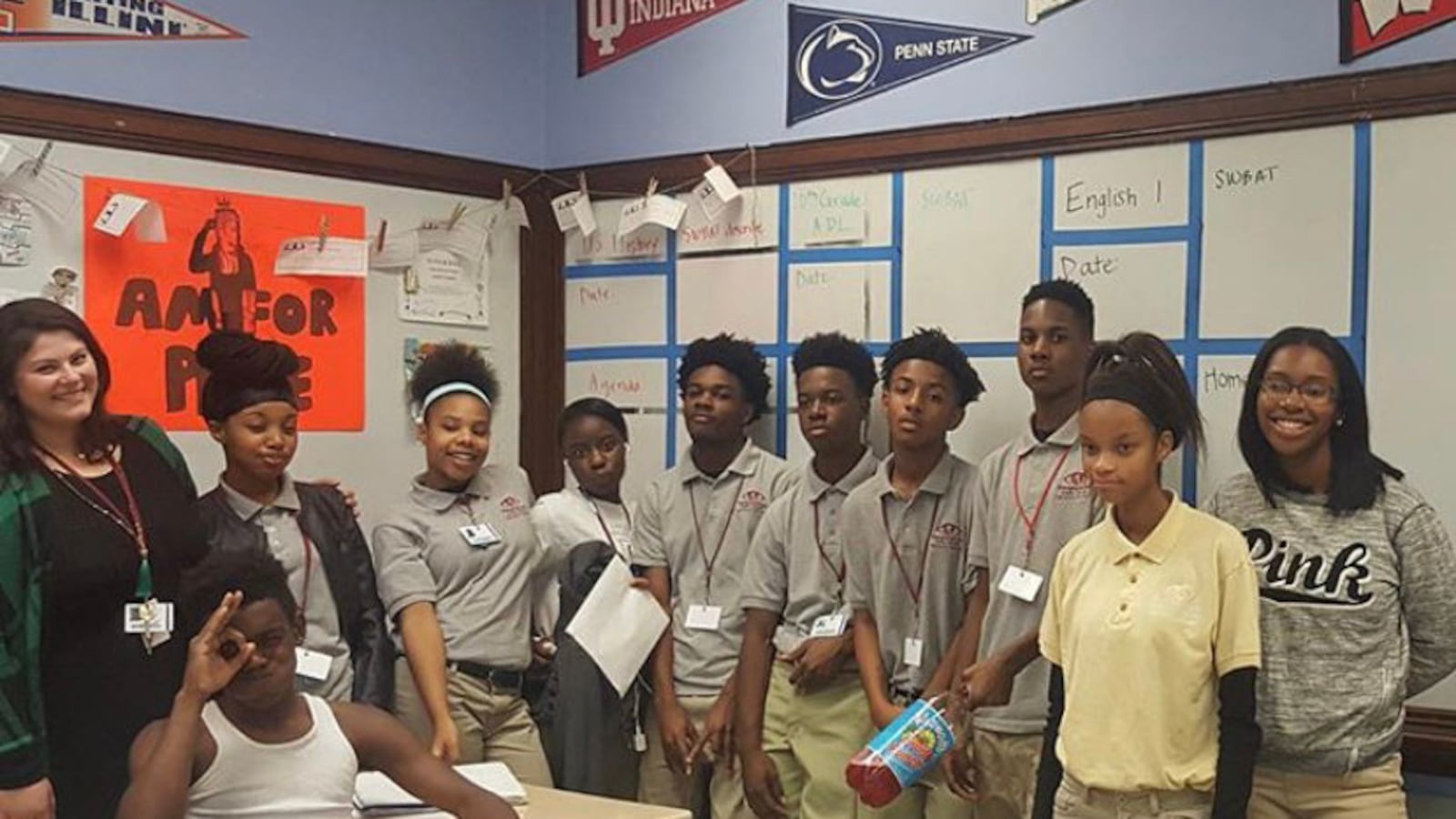
Last year was my seventh year as an English teacher in Chicago schools. I’ve taught middle and high school, language arts, reading, writing, freshman and sophomore English (both regular and honors), and American history. I’ve had classrooms in Uptown, Gage Park, Auburn Gresham, and Englewood. I’ve taught in both Chicago Public Schools and charter schools, in schools with 1,000 students and in schools with barely 200, and — except for a short stint covering a maternity leave in the suburbs — my entire teaching career has taken place in the city of Chicago. Being a high school English teacher has been my identity for seven years; I genuinely love working with teenagers and teaching them to write and, hopefully, love reading the way I do.
Yet last year was also my final year as an English teacher in Chicago.
I am still working in education, albeit in a totally different career, and despite the fact that I would have liked to continue teaching, I am happier in both my personal and professional life than I have been in years. As Chicago Public Schools’ teachers and support staff go on strike, and as I hear non-teachers talk about how selfish Chicago’s teachers must be to pull themselves away from their students for just a bit more money, I am reminded that almost no one (outside of those who work in schools) truly understands what is going on not only in Chicago’s schools but in schools across the country.
I often see sentimental articles about “why we teach” and the reasons why the profession is a noble one. But I think this infantilization of educators is one of the reasons why we have gotten to the point where Chicago’s teachers are striking for the second time in seven years. So instead of waxing on about how teachers are selfless saints who go above and beyond to fulfill their calling — instead of the “Why We Teach” list — I’d like to talk about the reasons Why We Strike.
Probably the easiest-to-understand aspect of the Chicago Teachers Union’s contract demands is the cap on class size. Right now, the class size cap is 28 students in grades K-5, and 31 students in middle and high school classes. The union wants those numbers to be lower. Doing so would benefit both teachers and students: Smaller class sizes allow for more personalized instruction, as well as the ability to grow stronger relationships between teacher and student. I don’t think most people, including Mayor Lori Lightfoot and Chicago schools officials, would argue against that.
But what I don’t think the general public understands is that currently, if classes in Chicago exceed the class-size cap, nothing happens. Nothing at all. If a teacher has 32 eighth-graders in her classroom, with some students sitting at computer tables because there are not enough desks in the room, and there are no English as a second language or special education teachers in the classroom even though more than a quarter of the class needs them, it will be no one’s problem but the classroom teacher’s — and, of course, his or her students’.
I know this is true because it was the situation I was in my first year as a teacher, mere weeks after we returned back to school after the 2012 Chicago Teachers Union strike. I was told, as are most teachers in similar circumstances, that it was my job to figure out how to make the situation work, and if I had any complaints it must mean I didn’t care about the well-being of my students.
My situation was, unfortunately, not unusual; 41,000 current elementary school students in Chicago are learning in overcrowded classrooms, according to a union estimate. The union is asking for the change in cap size, as well as an added monetary penalty charged to CPS for each “extra” student in each class, because we have learned over the years that nothing will change about overcrowded classrooms under the current rules.
Another significant contract demand concerns principal-directed prep time. Currently, Chicago elementary school teachers have five hours of prep time during the school day each week, and one of those hours is “principal-directed.” High school teachers get eight hours of prep time, and their principals can direct nearly two of them. Principal-directed prep time generally is when staff or team meetings are held, but occasionally principals will also ask teachers to attend professional development during this time.
When I was teaching, I had principals ask, suggest, and even demand that I do things completely outside of the realm of my job description, from picking up a student and driving him to school so he wouldn’t be late, to staying after school to use the front office’s phone to call parents, to buying my own copy paper. I used my prep time to prepare for their classes, make copies, grade assignments, call or meet with parents, attend special education meetings (special education teachers also use the time to write those plans), and take care of personal needs such as going to the bathroom. The amount of prep time that I got was never enough.
So when I saw that Chicago proposed letting principals direct three-fifths of all elementary and high school teachers’ prep periods, I realized that city negotiators must not understand what classroom teachers do, or worse, do not respect their work. Reducing teachers’ prep time would add to the dynamic that already exists, where we believe it is acceptable for teachers to always be on the clock (without overtime pay), whether it’s elementary school teachers making lesson plans for their multiple subjects during their weeknights or high school teachers taking papers home to grade over the weekend.
When I told people I was a teacher, their reaction was often, “Wow, good for you! You must be so hardworking” or “You must be so selfless.” These responses made me feel silly for my choice in career — and they made me see that we’ve been conditioned to think of teachers as less than professionals.
One of the reasons I could justify leaving the classroom is that I finally felt that nothing I was doing in the classroom was actually going to make a difference. It hit me at one point last year, when I was teaching a class of sophomore students in my American literature class. Almost half of my students had special needs, and none of the students could read at grade level. I did not have a special education teacher that day, and I had to decide which of my students I would be able to help during that particular class, with the full knowledge that I wouldn’t be able to give extra attention to all of them. I couldn’t even considering paying special attention to any of my students who did not have special needs.
I’ve been thinking about that last class of students (a group that I adored), the ones who were not prepared to be sophomores. How many of them were in classes of 40-plus students in third grade? How many of them had special education teachers in elementary school who were frequently pulled out of class to substitute for another teacher?
We need radical change in our schools, and we need it now. If you have had any less-than-charitable thoughts about the striking CPS teachers, I hope you will instead think of why they strike — and listen to those of us who have been there.
Julie Kallas lives in Roscoe Village and is a former middle and high school English teacher. She now works for a tutoring company.
About our First Person series:
First Person is where Chalkbeat features personal essays by educators, students, parents, and others trying to improve public education. Read our submission guidelines here.

